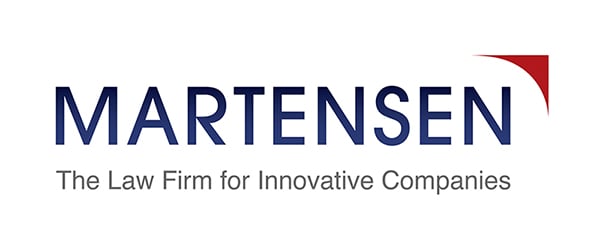Avoiding Invention Disclosure Landmines: Why A Prior-Art Search Isn’t Always The Best Answer
Many inventors do not understand a very basic prerequisite to getting a patent: the duty to fully disclose to the United States Patent and Trademark Office (USPTO) how to make and use the inventor’s invention. The rationale for this requirement is deeply embedded in the U.S. Constitution—through amplifying statutes and case law—the implication of which is this: “You (the inventor) tell us what you know and we (‘the people,’ more specifically, the government) will give you exclusive rights to your invention for a certain duration.”
But this “duty to disclose” often plays out with unintended consequences, stemming from the fact that the duty includes disclosing anything the inventor is aware of that might adversely impact the patentability of invention. Failure to do so can kill your chances of getting a patent or worse: It can invalidate your patent even after it is awarded. This short segment is directed to those least likely to be aware of—let alone appreciate—the implications of this duty-to-disclose rule: namely, startups. Understanding how this duty applies will help your tech-focused startup craft policies at an early stage to ensure it isn’t tripped up later, helping to pave the way toward your being awarded a patent.
What Is This “Disclosure Rule” and Why Is It There?
“Rule 56” is a colloquial term patent practitioners use to refer to the so-named Rule under Title 37 of the Code of Federal Regulations: Part 1, Subpart 1.56. This Rule, more formally known as “37 CFR 1.56,” states that a patent applicant owes a “duty of disclosure, candor and good faith.” Rule 56 further states:
A patent by its very nature is affected with a public interest. The public interest is best served, and the most effective patent examination occurs when, at the time an application is being examined, the Office is aware of and evaluates the teachings of all information material to patentability.
This “public interest” is one of the two critical prongs of the patent system—the other, of course, being the inventor’s interest. As alluded to earlier, the patent grant is an exchange—a contract, if you will—between the people and the inventor. In that contract, the inventor gains a time-limited right to exclude others from selling, manufacturing or importing the patented invention. In exchange, the inventor shares the fruits of the invention’s research and development so the public benefits by having the inventive idea enter the mainstream of commerce, rather than being hidden from the public eye as a commercial secret.
Such a secret is known as a “trade secret.” Trade secrets can be very useful, but like patents and all other forms of intellectual property, trade secrets have their own limitations, discussion of which is beyond the scope of this short piece.
The monopoly-like power afforded by the grant of a patent is a powerful incentive for inventors to “fully disclose” as a condition of being awarded that patent. But what does “fully disclose” mean, exactly?
What Does Rule 56 Require?
Rule 56 requires an inventor’s patent application to disclose “all information known to that individual to be material to patentability as defined in this section” (emphasis added). The Rule further states, “The duty to disclose information exists with respect to each pending claim until the claim is canceled or withdrawn from consideration, or the application becomes abandoned.” This immediately begs a few questions: What is “information”? Who is “that individual”? And what is “material to patentability”?
These terms are defined elsewhere in the statute, but simply put, “information” means anything those involved in the process of filing and prosecuting the patent application (inventors, company administrators, patent attorneys, etc.) are aware of that is “material to patentability as defined” (more on “material” shortly). That “individual” simply refers to any non-USPTO individual involved in the application-filing/prosecution process. In other words, virtually anyone involved with the invention and/or its patent application who isn’t actually evaluating the invention for the USPTO is a that-individual. For simplicity, I’ll refer to this collective group merely as the “applicant.”
Finally, “material to patentability” means a host of things that Rule 56 amplifies through a number of expository attempts at explanation:
- “Information … not cumulative to information already of record”
- Information that might establish “a prima facie case of unpatentability of a claim”
- Information that “refutes, or is inconsistent with” any patentability-related statement the patent applicant makes to the USPTO
But beyond these fairly complicated and legalistic attempts to define “material,” is it possible to define this term so a non-patent-specialist can understand the requirement? Perhaps.
The Problem With “Material to Patentability”
The “information” discussed above is linked in the same sentence to the claims in the patent application. So, as a coarse first step, “material to patentability” means any information that might impact the scope of the claims in your patent. As we’ve discussed elsewhere, the claims of a patent are essentially “legal boundaries” of the patent. As an analogy, think of these as you would the property boundary surrounding your house and yard. The difference, of course, is that claims are immaterial boundaries: They define the dividing line between what you can keep others from doing and what you can’t, as far as your invention is concerned.
Put another way, they define the “what” of what you’re allowed to exclude others from making, using, offering to sell, selling or importing. Here, “scope” refers to the span of those “boundaries”—that is, the invention-span over which you can exclude others. Under constraints imposed by statutory law and federal rules, claims must be framed in extremely formal, legalistic language, rendering their interpretation—and thus the interpretation of what is “material”—very difficult to understand, even for experts.
So, this coarse, first-step definition, while somewhat helpful, doesn’t help enough to provide a practical answer. Compounding the problem, claims can (and predominately do) undergo substantial modification during the course of the patent application process. Given this moving target of claim language and the vague definition of “material,” however, how can you comply with this Rule whose noncompliance leads to such draconian results?
Practical Tips to Comply With Rule 56
As a background, several approaches have been proffered to comply with Rule 56. Some larger corporations, for example, opted early on to deluge the USPTO with literally hundreds of documents. Examiners found it extremely difficult to read all the documents, though they are required to do so. These “document dumps” extended even to filing every communication with the USPTO through lengthy administrative form submissions.
Patents issued on these bases cite page after page of references that could not possibly have been actually reviewed by USPTO personnel, nor did every submitted document likely meet the “materiality” standard set out under Rule 56. The USPTO, of course, blanched at this tactic, though Rule 56 is, to a certain extent, a vehicle of USPTO’s own making. Many large corporations seemed to adopt strategies of “throwing in the kitchen sink” to inoculate their inventions from examiners and potential litigants who might attempt to invalidate their patents. However, this approach is highly impractical for most applicants. This tactic also sets the patent applicant up for potential battles with disgruntled USPTO examiners, not to mention lengthy delays associated with document reviews for “materiality.”
A more thoughtful and elegant approach is simply to rely on Rule 56 itself. Yes, material references must be cited to the examiner. However, the Rule does not require that inventors, applicants or owners scour the planet to find prior art that might undermine patentability. The Rule simply requires an applicant to cite only those prior-art references of which the applicant is “aware.” In light of this caveat, many companies and their patent counsels advise inventors to avoid searching for prior art or comparing their inventions to the same.
This approach is prudent for a couple reasons. First, as detailed above, inventors are unlikely to be able to easily distinguish “material” references from “non”-material references. Second, should a question involving a particular patent’s validity arise, the last thing a company should want to learn is that someone “in the loop” (i.e. the “applicant,” as defined above) found a material reference, discussed it in emails with colleagues and never raised the issue to the company or to its patent counsel. Accordingly, all companies should be aware of Rule 56 and its implications, and establish policies at an early stage on how inventors should be educated on and comply with Rule 56.
The consequences of noncompliance with the “duty to disclose” are a serious threat to underinformed inventors. Rule 56 typically does not surface as an obvious roadblock in the near term, but rather under even worse conditions: as a litigation landmine well down the road, after issuance. Compliance is not difficult, but communication with experienced patent counsel during the application process is essential to ensure each stakeholder understands the practical implications of this duty and to guarantee the company implements a sensible compliance policy on the basis of that understanding.
Ironically, the best prior-art search is perhaps the most basic. An “overview” search of prior art (i.e., “surface-layer” surveys of patents, printed publications and other prior-art references), counterintuitively, may be the best search—both for the price and for the depth-of-discovery desired for fulfilling disclosure obligations while not digging so deep as to hit a landmine. Look for the “big rocks” blocking the path to the invention’s patentability. If they exist, perhaps seeking a patent on the invention isn’t the wisest choice. If they don’t exist, however, pressing forward and not worrying about the “little rocks” (i.e., the more obscure prior art that may or may not surface) is likely the most prudent choice. In this sense, perhaps an oft-used axiom is most apt as an approach to prior art searches vis-à-vis the inventor’s duty to disclose: Don’t ask the question if you don’t want to know the answer.



